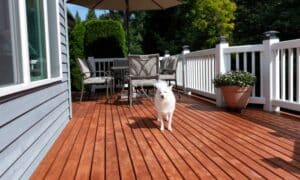As most pet parents can attest, dogs are both amiable and feisty. These two seemingly incompatible traits are what dog training so difficult, especially in the early years. Luckily, experts abound that can give us helpful hints on how to get our treasures pooches to mind their manners and behave in public and in the home.
Below are the things you should know to train a puppy and a full grown canine. You can modify these approaches to fit the personality of your dog as these are guidelines, not hard and fast rules.
Puppy training
Puppy training can be engaging, rewarding and fun with the mind set. Remember, puppies are playful, so getting and keeping their attention is the key to success.
- Train early – young pups are very enthusiastic and alert, in fact, you can start training a puppy that is only a week old. The best way to do this is to set boundaries and rules and enforce them strictly. Don't let the puppy jump up on you and be sure to have treats handy to point out behaviors that are good.
- Reward – Make great fan fare out of each accomplishment so they understand what they are being rewarded for. While some leniency is of course allowed, be sure to offset broken rules with reinstatement as often as possible. In time, the puppy will understand the difference between being allowed a special reprieve and what is acceptable on a regular basis.
- House/Crate training – the quickest way to house train a puppy is to place it in a crate. This is because dogs hate to soil their living area and will treat this space like a “den”. You can then take them out of the crate and deliver them outside so they can eliminate. The crate itself, if made comfortable, will become their go to place for a bit of R and R so they won't “go” anywhere near it. Only keep your pet in the crate when you are home and be sure to let your pup out at night ritualistically.
- Breaking the biting/chewing habit – all animals, especially baby ones, enjoy biting and mouthing objects. When they nip on furniture or a hand or foot, they are not aware they are doing anything wrong. One way to break this habit is to allow them to play with other pups. Puppies play rough and react negatively when the biting becomes too much. This peer pressure allows them to understand that biting is unacceptable. The purchase of chew toys allows them to get the biting urge sated so they are less apt to bite or mouth other objects.
Dog training
Dog training can be a tad more complex and often fall into the realm of obedience.
- Leash training – the trick to getting a full grown dog to accept a leash it to make them understand the leash is not a punishment. If you get them to associate pleasant things, like walks or an outdoor jaunt with a leash they will actually look forward to seeing it. Don't let them react in an out of control fashion and let them know that any disobedient behavior will delay their walk and they will be better behaved. Also, learn to walk with great long strides or to trot with your dog so they don't feel hampered by the leash.
- Not coming when called – your dog will obey almost any command when something positive is attached to it. Far too often a pet parent only asks the dog to come to them when they seek to punish the animal or leash them. If the dog can associate positive memories to the experience, they will be more likely to behave in a positive manner to the command.
These few small tips can work in conjunction with one another no matter the age of your pet. As always, keep in mind your dog's temperament and respect the independence of the animal as you train them to coexist with the humans and other animals.





